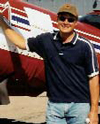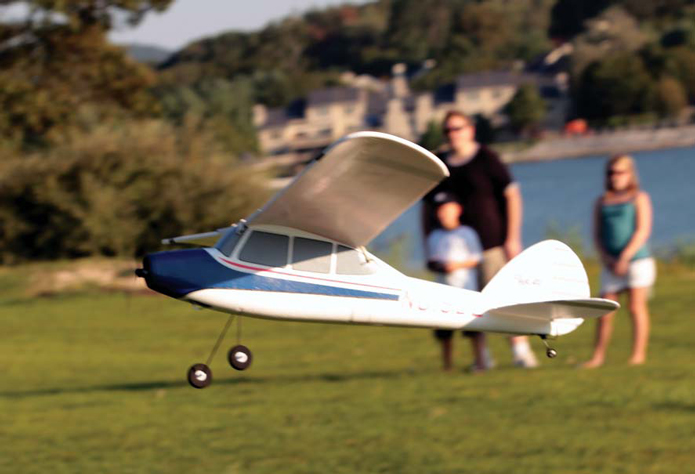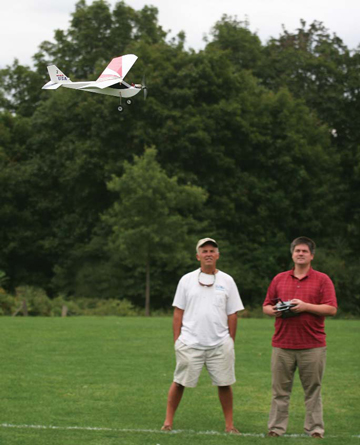 Scott Stoops is a commercial pilot for United Airlines who flies a fullscale Sukhoi 26MX in IAC competition for fun on his days off. The second edition of his book,The Pilots Guide to Mastering Radio Controlled Flight, is available at www.rcpilotguide.com.
Scott Stoops is a commercial pilot for United Airlines who flies a fullscale Sukhoi 26MX in IAC competition for fun on his days off. The second edition of his book,The Pilots Guide to Mastering Radio Controlled Flight, is available at www.rcpilotguide.com.
Every so often an event happens that causes me to refocus my emphasis on safety in the RC world. The most recent incident involved a giant-scale model and a full-scale aircraft at a local fly-in, and serves as notice in my mind that the RC community needs to ensure that all safety considerations have been addressed and remain in our collective focus at all times. Without commenting directly on the circumstances behind the incident which is still under investigation, Id like to discuss several points that apply directly to park flyers and threat management as they relate to learning to fly model aircraft.
KNOW YOUR ENVIRONMENT
Many pilots here will undoubtedly learn to fly at their local park with a lightweight park flyer. Despite the fact that these models are very lightweight, they can cause a lot of damage to people and property in a crash. When you pick a field to fly at, be sure to do an assessment of its suitability for your size and speed model, taking into consideration obstacles like electric wires, backstops, buildings and fences. Although many fields look big enough at first glance, a second look will reveal obstacles, rough field conditions, etc making it unsuitable. Keep in mind that if you do lose control of your model, which can occur when learning to fly, any of those obstacles can quickly come into play for a collision. Youll also want to address your skill level. If youre just starting out, definitely over estimate the space needed. Likewise, if youre flying a new model, choose an overly large flying site until youre comfortable with its performance.

Next, be very aware of any human traffic that might cause issues with the site. If it is a ball field of any sort, contains a walking path or sidewalk, or even a large grass area there is a distinct possibility that people will wander onto yourrunway unexpectedly. In a park setting, it isnt uncommon for people to release their pets for a run, which can also cause problems as dogs love to chase model airplanes and meet new people. By taking a critical look at each flying site, youre better prepared to either avoid certain locations at certain times or at least manage the flying site to the best of your ability.
 FLY WITH A SPOTTER
FLY WITH A SPOTTER
As a general rule, youll want to fly with a spotter whenever possible. So, what is a spotter? A spotter is a fellow pilot that you trust to visually clear your intended flight path, verbally announcing any threats as they became obvious. A spotter is NOT someone that watches your airplane for fun, but instead watches out for other airplanes or modelers that might conflict. In a park flyer setting, spotters should also provide information about ground based threats like children playing, cars approaching, kids on bikes, or even people approaching to ask questions or comment on your great flying skills. A good spotter will allow you to focus on flying your airplane while keeping you in the loop. Ive even seen a spotter provide blocking between a dog gone astray and a pilot trying to get his model safely back on the ground!
BE READY TO CRASH
In the event that you are faced with an imminent collision with a person or someones personal property, you have to be ready to crash and lose your model to avoid that collision. I know this is a strong statement, but it is absolutely necessary. There is no human injury that is acceptable in exchange for a model airplane. Thats just a trade that we have to be willing to make if were going to fly RC model airplanes. Again, that threat can be minimized by flying at sites that are clear and open with little chance of observers or persons using the field while you fly.
JOIN THE AMA PARK PILOT PROGRAM OR AMA FULL MEMBERSHIP
Ive written about the value of the AMA (Academy of Model Aeronautics) in previous columns and the new AMA Park Pilot Program is a great alternative for pilots that fly only smaller models. The program is limited to models that weigh less than two pounds, are slower than 60 mph and use electric power systems. That basically defines park flyers in my mind, making it a great match for new pilots that want the protections the AMA offers as well as the guidance and support that are included. In addition to a quarterly magazine, you get full access to the www.theparkpilot.org and $500,000 of personal liability insurance coverage. This insurance coverage applies whether youre flying in your backyard, at a neighbors house or at a local park as long as no local ordinances prohibit flying RC airplanes there. While were all doing everything we can to ensure an accident never happens, this insurance will be there if, God forbid, you ever needed it.
As an added benefit, the Park Pilot program also helps local pilots find each other and find suitable flying sites. A quick look at their site has proven to me the value in an AMA Park Pilot membership. At only $29.95 per year, it might just be the deal of the decade.
CONCLUSION
Safety should be paramount in every step of your RC experience. By focusing on finding a flying site that fits your model, skills and experience, and on being aware of your surroundings before, during and after each flight youre better prepared to be a safer pilot. Safety and success isnt a fluke, and avoiding situations that put you or others in danger is a great first step. Fly safe, and remember that learning is fun, and fun is what this great hobby is all about.
Links
Academy of Model Aeronautics (AMA), www.modelaircraft.org , (765) 287-1256
 Fly RC Magazine WE LIVE RC
Fly RC Magazine WE LIVE RC
